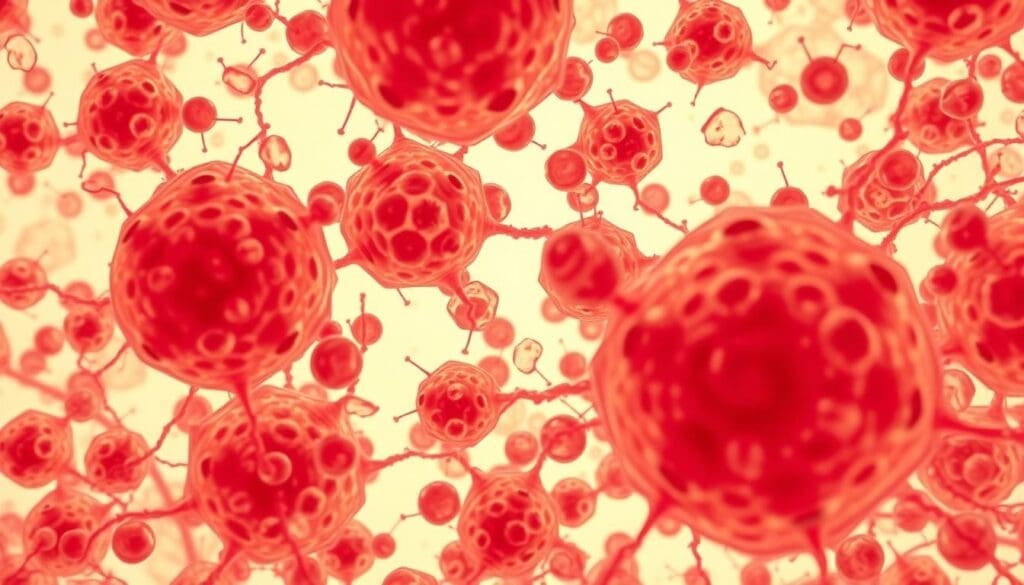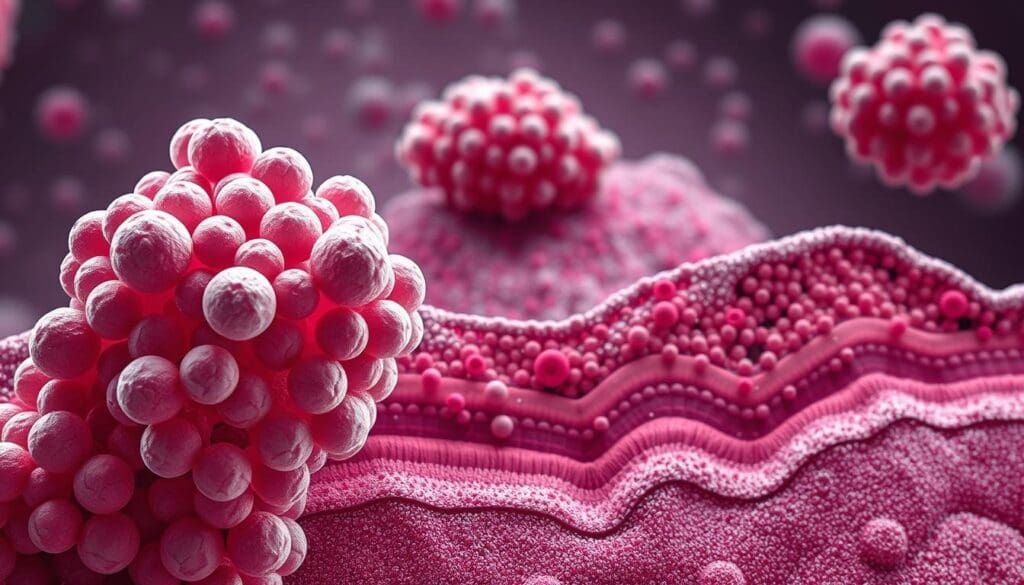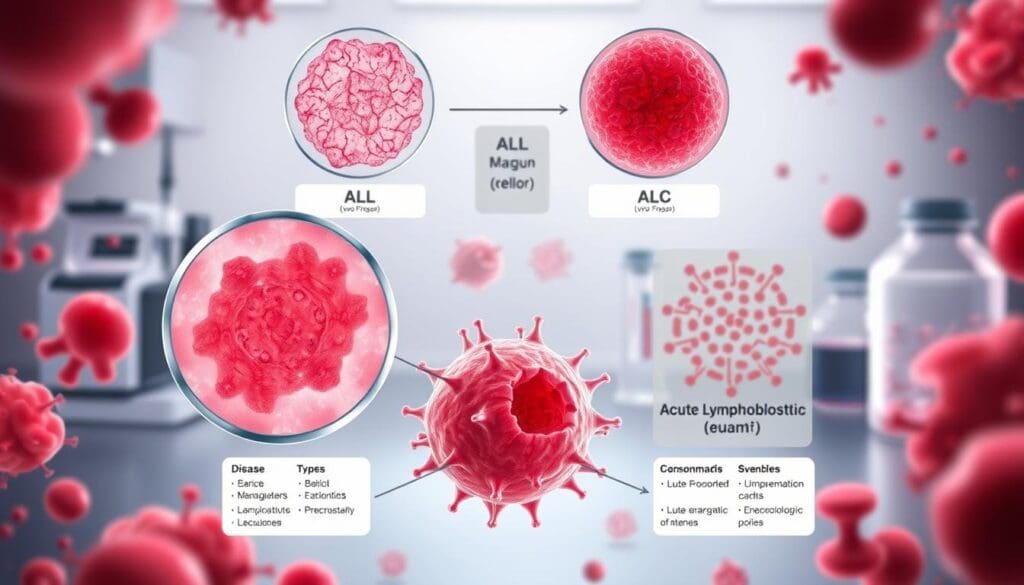Last Updated on November 14, 2025 by Ugurkan Demir

Acute lymphoblastic leukaemia cancer, also known as acute lymphocytic leukemia (ALL), is a fast-growing type of blood cancer that affects immature lymphoid cells in the bone marrow and blood. Understanding acute lymphoblastic leukaemia cancer is key for patients and families seeking reliable information and care.
This disease is the most common cancer in children, making up about 25% of all pediatric cancers, though adults can also be affected. Acute lymphoblastic leukaemia cancer disrupts normal blood cell production and weakens the immune system. There are several types of ALL, each requiring specific approaches to diagnosis and treatment.
At Liv Hospital, we provide world-class treatment and compassionate care for patients with acute lymphoblastic leukaemia cancer. Our personalized treatment plans focus on each patient’s unique condition, ensuring the best outcomes and full support throughout recovery.
Acute Lymphoblastic Leukaemia (ALL) is a cancer that messes with how blood cells are made. It’s marked by the fast growth of immature white blood cells, called lymphoblasts. These cells fill the bone marrow, stopping it from making normal blood cells.

ALL is a cancer that attacks the blood and bone marrow. It’s called “acute” because it grows fast if not treated. It’s also known as “lymphoblastic” because it targets lymphoid cells.
Symptoms include feeling tired, getting sick often, and bleeding easily. You might also lose weight, have night sweats, and notice swollen lymph nodes, liver, or spleen.
ALL starts with a bone marrow change. A normal stem cell turns into an ALL cell and grows. This crowds out normal cells, causing a lack of healthy blood cells.
ALL is the most common cancer in kids, but it can also hit adults. It’s most common in kids aged 2 to 5. Adults with ALL face a tougher battle.
Here are some stats on ALL:
| Age Group | Incidence Rate | Survival Rate |
| Children (0-19 years) | 3-4 cases per 100,000 | 90% 5-year survival rate |
| Adults (20-59 years) | 1-2 cases per 100,000 | 40-50% 5-year survival rate |
| Older Adults (60+ years) | 2-3 cases per 100,000 | 10-20% 5-year survival rate |
ALL has different types, like ‘B ALL’ and ‘T ALL’. Knowing the type helps doctors choose the right treatment.
It’s important for patients and doctors to know the difference between Acute Lymphoblastic Leukemia (ALL) and Acute Lymphocytic Leukemia. These terms are often mixed up, but knowing what they mean can help clear up confusion.
The words around ALL have changed over time. Acute Lymphoblastic Leukemia talks about the ‘blast’ cells, which are young and cancerous. Acute Lymphocytic Leukemia points to the type of lymphocytes affected by the disease.
Let’s look at why both names are used for the same disease. It’s because both names talk about cancers of young lymphocytes.
Doctors use both terms because they talk about the same disease. Acute Lymphoblastic Leukemia is more specific, showing the cancer’s details.
Here are some key points explaining the interchangeable use:

Knowing the origins and uses of these terms helps patients and doctors talk better about ALL. This includes discussing diagnosis, treatment, and care.
ALL Cancer is not just one disease. It includes many subtypes, mainly based on the type of lymphoid cells involved. Knowing the different types of ALL is key to understanding the disease, predicting outcomes, and choosing the right treatment.
B-cell Acute Lymphoblastic Leukaemia (B ALL) is the most common type, mostly seen in children. It starts from the bad change of B-cell progenitors. B ALL makes up about 75-80% of ALL cases in kids.
Doctors diagnose B ALL by looking for specific markers on leukemia cells. Thanks to new treatments, B ALL outcomes have greatly improved, mainly for children.
T-cell Acute Lymphoblastic Leukaemia (T ALL) is another important subtype, with a higher risk than B ALL. It comes from the bad change of T-cell progenitors. T ALL is more common in teens and young adults.
T ALL often shows up with more serious symptoms at diagnosis. Intensive treatment protocols are needed for T ALL because of its higher risk.
There are other ways to classify ALL, like by genetic traits and specific chromosomal abnormalities. These classifications help in risk assessment and customizing treatments.
The World Health Organization (WHO) has a system that uses genetics and cell appearance to classify ALL. This helps doctors give more tailored care.
Knowing the signs of ALL is key for early treatment. Acute Lymphoblastic Leukaemia shows symptoms that can look like other illnesses. This makes it hard to spot.
ALL symptoms include fatigue, frequent infections, bruising, and bleeding easily. People might also have night sweats, weight loss, and swollen lymph nodes, liver, or spleen. These happen because bad cells in the bone marrow stop normal blood cells from being made.
While ALL symptoms are similar, they show differently in kids and adults. Kids often have bone pain, fever, and dizziness. Adults might face severe anemia, thrombocytopenia, and other problems.
Kids with ALL might also feel irritable, lose their appetite, or have trouble breathing. Adults might experience weight loss and night sweats. Doctors need to know these differences to diagnose and treat correctly.
Diagnosing Acute Lymphoblastic Leukaemia (ALL) starts with a detailed medical check-up. This includes tests to find leukemia cells. Accurate diagnosis is key for the right treatment and better outcomes.
We begin with a complete blood count (CBC). This blood test checks for different blood cells. If it shows odd results, like anemia or leukemia cells, we do more tests.
A bone marrow examination is next if the CBC looks off. We take a bone marrow sample for a closer look.
We also use imaging tests like X-rays, CT scans, or MRI scans. These help see how far the disease has spread and if there are any complications.
After diagnosing ALL, we stage and assess the risk. This tells us how severe the disease is and what treatment is best.
Staging looks at how far the disease has spread. Even though ALL is a systemic disease, staging helps us understand the risk. It guides our treatment choices.
| Risk Category | Characteristics | Treatment Approach |
| Standard Risk | Patients with certain favorable genetic characteristics and a good response to initial treatment. | Less intensive chemotherapy regimens. |
| High Risk | Patients with adverse genetic features or a poor response to initial treatment. | More intensive chemotherapy, possibly including targeted therapy or stem cell transplantation. |
Knowing the risk category helps us customize treatment. We aim for the best results with the least harm.
Today, treating ALL involves teams of experts. They use chemotherapy, targeted therapies, and stem cell transplants. This approach has cured over 85% of children. The treatment plan depends on the risk and staging.
Modern treatments for ALL aim to kill cancer cells while keeping healthy ones safe. A team of experts works together to create a treatment plan for each patient. This plan takes into account the patient’s health and needs.
ALL treatment often includes a mix of therapies. Chemotherapy is key, aiming to destroy cancer cells. We also use targeted therapies to focus on cancer cells’ specific traits, protecting normal cells. Sometimes, stem cell transplantation is suggested for high-risk cases or relapses.
The treatment has several stages: induction, consolidation, and maintenance. The goal of the induction phase is to reduce cancer cells. Consolidation aims to get rid of any remaining cells. Maintenance uses less intense treatment to prevent cancer from coming back.
New treatments and clinical trials are vital for improving ALL care. Immunotherapies, like CAR T-cell therapy, show great promise. We’re also looking into targeted therapies that target specific cancer cell traits.
Clinical trials are key for testing new treatments. They help us learn about their safety and effectiveness. Patients can find out more about trials and new treatments at the National Cancer Institute’s page on Adult ALL.
Treatment plans vary by age. Children with ALL usually have a better outlook thanks to specific treatments. But, older adults face unique challenges due to health issues and less tolerance for strong treatments.
| Age Group | Treatment Considerations |
| Children | Tailored protocols with a focus on minimizing long-term effects, high cure rates |
| Young Adults | Intensive chemotherapy and possible stem cell transplantation |
| Older Adults | Less intense treatments, considering health issues, and supportive care |
It’s important to understand these differences. This helps in creating effective treatment plans for each age group.
It’s key to know what ALL is and its effects. Acute Lymphoblastic Leukaemia (ALL) is a tough condition. But, thanks to new treatments, the outlook for ALL has gotten much better, mainly for kids.
Today, kids with ALL have a chance of being cured, with success rates over 85%. For adults, the time spent in remission has also increased a lot. This gives hope for better results in the future.
Dealing with ALL means getting all-around care and support. We stress the need for a complete treatment plan. This plan should cover physical, emotional, and mental health. This way, people with ALL can live better and have a good shot at beating the disease.
As we keep learning and improving in treating ALL, the future looks bright. It’s vital to keep up with the newest in ALL treatment and support.
ALL is a blood and bone marrow cancer. It makes lots of immature white blood cells, called lymphoblasts or leukemic blasts.
ALL and Acute Lymphocytic Leukemia are the same disease. The difference is in the names used.
Symptoms include feeling very tired, getting sick often, and bleeding easily. These happen because the disease affects the bone marrow and blood cells.
Doctors use blood tests and bone marrow exams to find leukemic cells. They check how far the disease has spread.
There are B-cell ALL and T-cell ALL. These types depend on where the cancer starts and affect treatment plans.
Doctors look at how many cancer cells there are and the leukemia’s genetic traits. They also check how well the first treatment works. This helps predict the outcome and plan treatment.
Treatments include chemotherapy, targeted therapies, and sometimes stem cell transplants. The choice depends on age, type of ALL, and risk level.
Yes, many people, including children, can be cured with today’s treatments. But, the chance of a cure depends on age and disease details.
ALL is the top cancer in kids, making up 25% of pediatric cancers. It also happens in adults, but it’s rarer and harder to treat.
Both names describe the same disease. ‘Lymphoblastic’ highlights the disease’s immature ‘blast’ cells.
Clinical trials are key in finding better treatments for ALL. They test new therapies and strategies to help patients.
ALL is more common in kids, and they often have a better chance of recovery. Adults can also get it, but treatment is more complex and outcomes vary.
Subscribe to our e-newsletter to stay informed about the latest innovations in the world of health and exclusive offers!